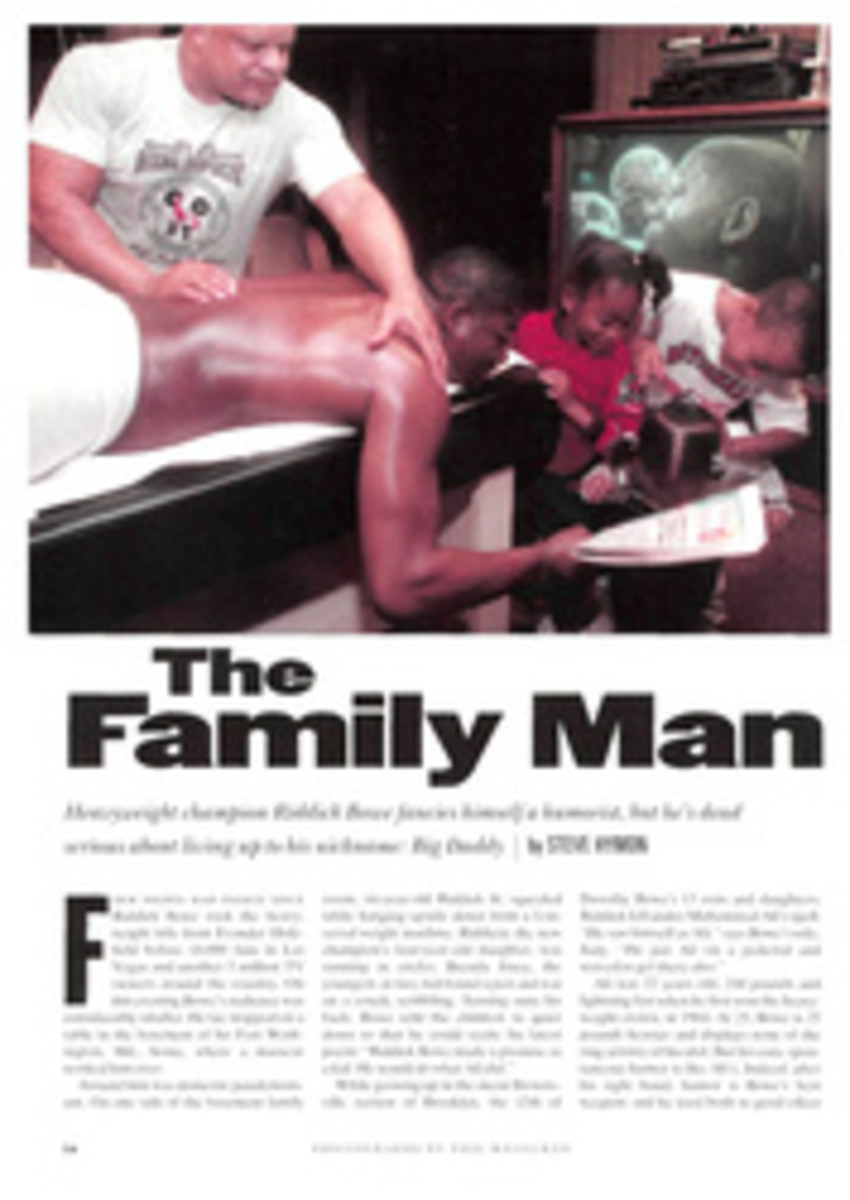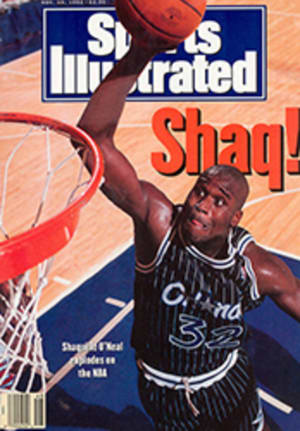
The Vibes of Victory
Few basketball fans will forget Game 6 of the 1992 NBA championship series. The Chicago Bulls were down by 15 points at the start of the fourth quarter. Things looked bleak for Chicago. But as Michael Jordan and most of the team's other starters sat on the bench, Bobby Hansen hit a three-pointer, sparking a run that left the Bulls down by only three with 8:36 remaining. Portland called timeout.
Jim Irwin, the Bulls' sound engineer, was in the organ loft at venerable Chicago Stadium, seated behind a computerized stereo system that resembles the control panel of a space shuttle. Through his headphones he heard the command "Play 312" from his boss, David Brenner, the Bulls' promotion manager, who was at courtside. Irwin snapped into action, and before most of the players had even stepped off the court, the pulsing drumbeat of Gary Glitter's Rock and Roll Part II boomed out of the stadium's P.A. system at an earsplitting level.
The standing-room-only crowd of almost 19,000 responded as predictably as Pavlov's dogs. The fans were on their feet, swaying and clapping. Some punched the air as they belted out the song's trademark "Hey!" After the game a few observers suggested that it was this unleashing of fan energy that had helped the Bulls charge on to their 97-93 win and second consecutive NBA title.
Bull partisans aren't the only people to go gaga over Rock and Roll Part II. In fact, these days sports fans are lucky to escape the song. It was blared in Denver and Detroit during last season's NFL playoffs, and Atlanta played it between tomahawk chops at the World Series. College basketball arenas rock to the music; so do college football stadiums, though with a decidedly big-band sound. Last winter there was even an Illinois high school basketball game—Bolingbrook versus Lincolnwood—during which fans, lacking a band or a sound system, simply started clapping, air-guitaring and hey-heying a cappella.
All of which seems to secure Rock and Roll Part II a place in the pantheon of rock-song sports anthems, joining such historic hits as Steam's Na Na Hey Hey Kiss Him Goodbye and Queen's We Will Rock You. All of this is music to the ears of Glitter, the man who cowrote—with Mike Leander—and first performed Rock and Roll Part II 20 years ago. "I'm on a high about it all," says Glitter, who was born Paul Francis Gadd, from his home in Surrey, England. "Believe it or not, when we wrote the song we were trying to sound like Wembley Stadium full of football [soccer] supporters."
Glitter, a pleasant chap of 48, has been recording since the age of 14. In the mid-'60s he hooked up with Leander, a songwriter and producer, and several years later they wrote and recorded Rock and Roll Part II. "I had never been able to get that hit record," Glitter says. "So we were trying to come up with something different."
Glitter and Leander played all the instruments for the sound track of Rock and Roll, quite a feat in the days before supersophisticated recording equipment was available. Glitter tuned his guitar to C. "That gives the music its bottlenecked sound," he says. "Then we plugged into our five-watt amplifier and simply kicked it again and again for that growling effect. We wanted the music to seem a little angry." Besides the guitar, other instruments used were saxophone, bass guitar and drums. Glitter also sang and clapped his hands.
That year, 1972, the song was at the top of the pop charts in both the U.S. and Britain. "I even won the equivalent of your Grammy," says Glitter. "It was crazy, really. Read the sheet music. The only words in the song are hey and ugh."
Rock and Roll Part II was the first and last hit Glitter had in the U.S. In England he went on to usher in the era of glam-rock. Singers performed wearing lipstick, eye makeup, plenty of Lurex and platform shoes. It wasn't long, however, before Glitter's career hit the skids. In the late '70s he ended up in bankruptcy court and was ordered to pay a bundle in back taxes. "I had to start all over again," he says. "Playing on the college circuits in the U.K. And good came out of the bad because I tapped into a whole new generation of fans."
These days Glitter is something of a cult figure in England—a sort of Jerry Garcia in Liberace duds. In 1991 his 20-day British tour was mostly sold-out, and all told, Glitter has had 12 Top 10 hits in the U.K. But he has never heard Rock and Roll Part II played at a sporting event. Which raises the question of how the song got its start as a sports anthem.
In 1974 Kevin O'Brien, then 22, was the public relations and marketing director for the Kalamazoo (Mich.) Wings, a team in the International Hockey League. "Back then, organ music was nearly synonymous with hockey games," says O'Brien. "But there was a movement to introduce some canned music during the games, so I started rummaging through my old 45 collection."
Tucked in with his Steppenwolf and Tommy James and the Shondells discs in a box in his basement was Glitter's Rock and Roll Part II (on the other side, Rock and Roll Part I). "I tossed it on the stereo and immediately thought, This is the song we have to use to bring the team out onto the ice," says O'Brien. The crowd at Kalamazoo's Wings Stadium went nuts.
In 1976 O'Brien took a job as marketing director for the Colorado Rockies of the NHL. His copy of Rock and Roll Part II went to Denver with him. Soon local radio stations were playing the song, referring to it as the "Rocky Hockey Theme Song."
Harry Smith, now the coanchor of CBS This Morning, was the morning drive-time disc jockey for Denver's KHOW and a diehard Rocky fan. "What's amazing to me is that the song is still played all these years later," he says. "It has gone well beyond clichè to become the 'Charge!' rally of this generation."
But back then, the song's place in the hearts of fans was far from secure. In Denver the NBA's Nuggets trounced the Rockies when it came to civic support, and in 1982 the hockey team moved east to become the New Jersey Devils. The team's new executives—most of the brass was not transferred from Colorado—remember one curious item among the contents of the team's moving boxes: a Gary Glitter 45. The Devils played the song from time to time, but it didn't catch on as it had in Denver.
When the hockey team left Denver, the city's other pro teams felt free to adopt the song. The Denver Broncos introduced Rock and Roll Part II to the NFL, admitting they stole the song from the Rockies, while the Nuggets did the same in the NBA. "We first heard the song about three years ago in Denver," says the Bulls' Brenner. "And when we introduced it in Chicago Stadium, our crowd loved it. Plus, I think the national television coverage we got throughout the season, especially during the playoffs and championship, really helped to popularize the song."
But all the arena airplay hasn't made Glitter rich. Payment of music royalties is a complicated procedure—based largely on how often a song is played on radio or television—and is made to an artist only when a piece of music is featured on a program, not when it is picked up as background noise in a commentator's microphone. BMI, the music-licensing giant that collects royalties for Glitter and many other musicians, annually surveys 500,000 hours of logs from 9,000 radio and 1,000 television outlets in the U.S. in order to determine what music has been played. Stadiums and arenas buy what is called a blanket license for the rights to use music. But the administrative costs of monitoring the 75,000 or so facilities that purchase these licenses—including nightclubs and restaurants—are prohibitive. As a result, the license fees simply augment the royalties pool, regardless of which music is played most frequently in these places.
Glitter isn't particularly concerned about the money. The crowds' response to his music is what makes him happy. He dreams of making a tour of U.S. stadiums and of being introduced to cheering throngs while his song blasts over the sound systems. "Maybe they'd even let me take in a few games for free," he says.
O'Brien, now a vice-president of a publishing company in Troy, Mich., watched on TV as the Bulls whipped the Portland Trail Blazers last spring. Along with the rest of the television audience, he and his wife, Therese, heard the strains of Rock and Roll Part II during timeouts and, 30 minutes after the final buzzer sounded for Game 6, watched as the capacity crowd in Chicago demanded an encore of sorts from the Bulls. The players obliged, standing on the scorer's table and swaying with the crowd as Glitter's song was played again and again.
As the fans sang on, Therese turned to her husband and observed, "Honey, never let it be said that you never had a good idea."
PHOTO
MICHAEL PUTLAND/RETNA
Glitter has performed his almost wordless song for 20 years.
PHOTO
MANNY MILLAN
Was it the beat of "312" that energized Jordan & Co. in Game 6?
PHOTO
MICHAEL L. ABRAMSON
Irwin cues up tunes in the old organ loft at Chicago Stadium.
Lisa Twyman Bessone lives in Chicago and writes often for Sports Illustrated.

